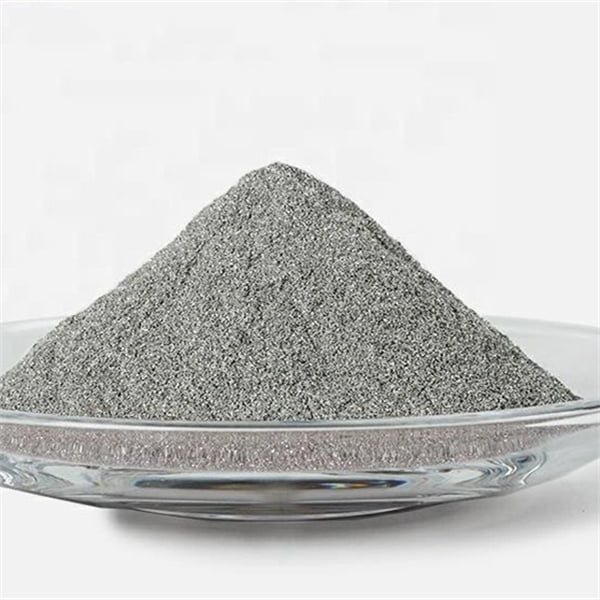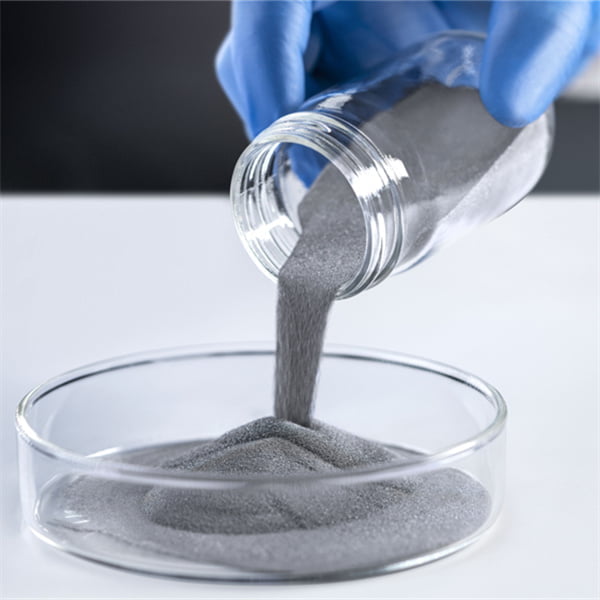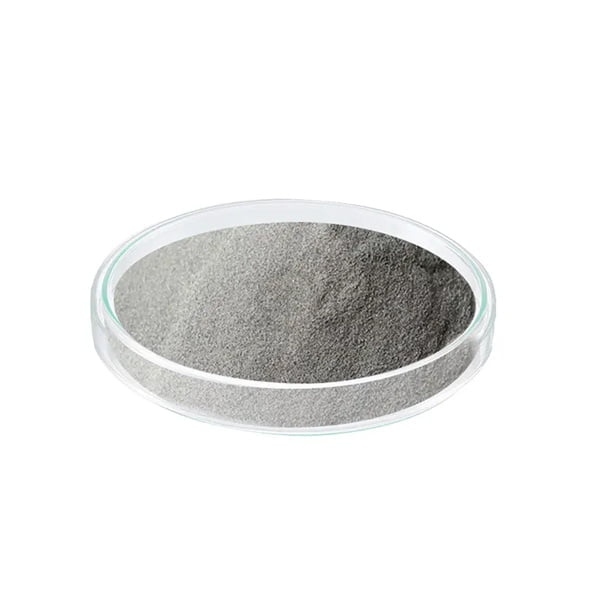3D tištěný kovový prášek vhodný pro technologii MIM
Obsah
Imagine crafting intricate, high-precision metal components with complex geometries – all thanks to a revolutionary 3D printing technique. That’s the magic of Metal Injection Molding (MIM), and the secret ingredient? Specialized metal powders that breathe life into these miniature marvels. Buckle up, because we’re diving deep into the world of MIM-compatible metal powders, exploring their properties, popular choices, and the factors that make them tick.
characteristics of 3D printed metal powder suitable for MIM
- Velikost jemných částic: Picture a beach overflowing with pebbles versus one sprinkled with fine sand. Similarly, MIM thrives on metal powders with a tiny particle size, typically ranging from 5 to 20 microns. This allows for exceptional flow during injection molding, ensuring intricate details are replicated flawlessly in the final part.
- Vysoká sféricita: Imagine perfectly round marbles versus jagged rocks. Spherical particles in metal powders boast superior packing density, leading to a more uniform structure and enhanced mechanical properties in the finished product.
- Vynikající tekutost: Think of pouring flour versus chunky oatmeal. MIM powders need exceptional flowability to navigate the intricate channels of the mold cavity during injection. This translates to a smooth molding process and minimizes the risk of defects.
- Nízký obsah kyslíku: Oxygen can be a party crasher in the MIM world. Excessive oxygen levels hinder sintering, a crucial step where the metal particles fuse, compromising the final component’s strength and density.
Here’s a handy table summarizing the key characteristics of MIM-ready metal powders:
| Charakteristický | Důležitost |
|---|---|
| Fine Particle Size (5-20 microns) | Enables intricate details and smooth flow |
| Vysoká sféricita | Improves packing density and mechanical properties |
| Vynikající tekutost | Ensures smooth injection molding and minimizes defects |
| Nízký obsah kyslíku | Promotes effective sintering and optimal strength |

Commonly used MIM Technology 3D printing of metal powders
Now that we understand the ideal traits, let’s explore some of the most popular metal powders used in MIM technology:
1. Nerezová ocel 316L:
- An austenitic stainless steel, renowned for its excellent corrosion resistance, making it a champion in applications exposed to harsh environments like marine components, medical implants, and chemical processing equipment.
- Compared to its cousin, 17-4PH stainless steel, 316L offers superior corrosion resistance but might be slightly weaker in terms of raw strength.
2. 17-4PH Nerezová ocel:
- This precipitation-hardening stainless steel boasts exceptional strength and hardness, ideal for parts requiring high wear resistance, such as gears, cams, and fasteners.
- When pitted against 316L, 17-4PH shines in strength but might be less suitable for highly corrosive environments. However, post-processing techniques can enhance its corrosion resistance to a certain extent.
3. Low Alloy Steel:
- A cost-effective option for non-critical applications where high strength isn’t paramount.
- Compared to stainless steel options, low alloy steel might exhibit lower corrosion resistance, making it less suitable for demanding environments. However, it excels in affordability, making it a popular choice for high-volume production of simple components.
4. Nickel Alloys:
- Offering exceptional strength, high-temperature resistance, and excellent corrosion resistance against harsh chemicals, nickel alloys are the go-to choice for demanding applications in aerospace, oil & gas, and chemical processing industries.
- While boasting superior performance, nickel alloys come at a premium price compared to other options.
5. Tool Steel:
- Engineered for exceptional wear resistance and dimensional stability, tool steel becomes the hero in applications like molds, dies, and cutting tools.
- Compared to other options, tool steel might require specific post-processing techniques to achieve its desired properties, adding to the production complexity.
6. Copper Alloys:
- Copper, known for its excellent thermal and electrical conductivity, finds its niche in applications requiring efficient heat dissipation and electrical conduction, such as heat sinks and electrical connectors.
- However, pure copper might lack the mechanical strength needed for certain applications. Alloying copper with elements like tin or chromium can enhance its strength while retaining its conductivity benefits.
7. Titanium Alloys:
- These lightweight yet incredibly strong alloys are the superstars in aerospace and biomedical applications where weight reduction and biocompatibility are paramount.
- While offering exceptional performance, titanium alloys come at a hefty price tag due to their complex manufacturing process and high raw material cost.
8. Kovar:
- A controlled expansion alloy known for its ability to match the thermal expansion coefficient of glass, making it the perfect partner for sealing glass to metal components in electronics and scientific instruments.
- Compared to other options, Kovar might exhibit lower mechanical strength, so it’s best suited for applications where structural integrity isn’t a primary concern.
9. Inconel:
- A family of superalloys renowned for their exceptional high-temperature strength, oxidation resistance, and creep resistance. These characteristics make Inconel ideal for hot-section components in jet engines, gas turbines, and other high-temperature applications.
- Similar to nickel alloys, Inconel comes at a premium cost due to its complex composition and demanding manufacturing process.
10. Tungsten Carbide:
- This incredibly hard and wear-resistant material finds its niche in applications requiring exceptional abrasion resistance, such as cutting tools, wear pads, and nozzles.
- However, tungsten carbide can be brittle and susceptible to chipping under certain conditions. Careful design and selection are crucial for successful implementation.
Here’s a table summarizing these commonly used MIM metal powders:
| Kovový prášek | Vlastnosti | Typické aplikace |
|---|---|---|
| Nerezová ocel 316L | Výborná odolnost proti korozi, dobrá tvarovatelnost | Marine components, medical implants, chemical processing equipment |
| Nerezová ocel 17-4PH | High strength, hardness, and wear resistance | Gears, cams, fasteners |
| Nízkolegovaná ocel | Cost-effective, good for non-critical applications | Simple components, high-volume production |
| Slitiny niklu | Exceptional strength, high-temperature resistance, excellent corrosion resistance | Aerospace, oil & gas, chemical processing |
| Nástrojová ocel | Exceptional wear resistance, dimensional stability | Formy, zápustky, řezné nástroje |
| Slitiny mědi | Excellent thermal & electrical conductivity | Chladiče, elektrické konektory |
| Titanové slitiny | Lehký, vysoce pevný, biokompatibilní | Aerospace, biomedical applications |
| Kovar | Controlled thermal expansion coefficient | Sealing glass to metal components |
| Inconel | High-temperature strength, oxidation & creep resistance | proudové motory, plynové turbíny |
| Karbid wolframu | Výjimečná tvrdost, odolnost proti opotřebení | Cutting tools, wear pads, nozzles |
Další úvahy při výběru MIM Kovové prášky:
Beyond the core properties, several other factors influence the selection of MIM metal powders:
- Dostupnost: Some exotic metal powders might have limited availability or longer lead times, impacting production schedules.
- Náklady: Prices can vary significantly depending on the material, complexity of manufacturing, and market demand.
- Environmentální předpisy: Certain elements within metal powders might be subject to stricter regulations regarding disposal or handling.
Specifikace, velikosti a třídy
Delving deeper, let’s explore some technical specifications of MIM metal powders:
| Charakteristický | Popis | Příklad |
|---|---|---|
| Distribuce velikosti částic | The range of particle sizes within the powder | May range from 5-20 microns, with a tight distribution for optimal flow |
| Zdánlivá hustota | The weight of powder per unit volume in its loose, uncompacted state | Typically expressed in g/cm³ |
| Klepněte na položku Hustota | The density of powder after a standardized tapping routine | Often higher than apparent density due to improved packing |
| Průtok | The rate at which powder flows under specific conditions | Měřeno v sekundách/gram |
| Obsah vlhkosti | The amount of moisture present in the powder | Ideally kept low to prevent processing issues |
| Obsah kyslíku | The amount of oxygen present in the powder | Lower oxygen content promotes better sintering |
These specifications are typically documented by the powder supplier and can vary based on the specific material and grade. Additionally, MIM powders are often available in various grades, each catering to specific performance requirements.

Prozkoumání stránek MIM Dodavatelé kovových prášků
The landscape of MIM metal powder suppliers is diverse, with several established players offering a range of materials and grades. Here’s a glimpse into some prominent names:
- Höganäs AB: A leading global producer of metal powders, offering a wide selection of MIM-ready powders across various materials.
- AMEX Additive GmbH: Specializes in high-performance metal powders for additive manufacturing, including MIM.
- Carpenter Additive Powder Products: A subsidiary of Carpenter Technology Corporation, providing MIM powders for applications demanding superior mechanical properties.
- Sandvik Additive Manufacturing: Leverages Sandvik’s expertise in metallurgy to offer MIM powders with exceptional quality and consistency.
Pricing Considerations: Unveiling the Cost Factor
The cost of MIM metal powders can vary significantly depending on several factors:
- Materiál: Exotic materials like titanium or Inconel tend to be more expensive than common options like stainless steel.
- Vlastnosti prášku: Fine particle size, high sphericity, and tight particle size distribution often command a premium due to the complexity of manufacturing such powders.
- Objem: Bulk purchases typically benefit from discounted pricing compared to smaller orders.
- Dodavatel: Different suppliers might have varying pricing structures based on their production costs and market positioning.
While specific pricing information might not be readily available due to fluctuating market conditions and individual supplier negotiations, it’s safe to say that MIM metal powders can range from a few dollars per kilogram for common materials like low alloy steel to hundreds of dollars per kilogram for high-performance options like Inconel or titanium alloys.
the Advantages and Limitations of MIM Metal Powders
MIM metal powders offer a unique combination of benefits and limitations. Let’s delve into both sides of the coin:
Advantages of MIM Metal Powders:
- Svoboda designu: MIM allows for the creation of complex geometries with intricate features, unattainable with traditional machining techniques.
- Vysoká přesnost: MIM produces near-net-shape components with tight dimensional tolerances, minimizing the need for extensive post-processing.
- Hromadná výroba: MIM facilitates cost-effective mass production of small, intricate metal parts.
- Všestrannost materiálu: A wide range of metal powders are available, catering to diverse application needs.
- Waste Reduction: MIM utilizes a near-net-shape process, minimizing material waste compared to traditional machining methods.
Limitations of MIM Metal Powders:
- Omezení velikosti dílů: MIM is typically suited for smaller components due to limitations in mold filling capabilities.
- Vlastnosti materiálu: MIM-produced parts might not always achieve the same mechanical properties as those created through traditional methods like forging or machining, especially for high-performance materials.
- Povrchová úprava: MIM parts might require additional post-processing steps to achieve a desired surface finish.
- Úvahy o návrhu: Designing for MIM requires careful attention to part geometry and feature size to ensure successful production.
- Náklady: While cost-effective for mass production, MIM powders themselves can be expensive, particularly for exotic materials.
MIM Metal Powders: A Look to the Future
The future of MIM metal powders is brimming with potential. As technology advances, we can expect to see:
- Development of new metal powders: Novel materials with improved properties specifically designed for MIM applications are on the horizon.
- Enhanced powder characteristics: tighter particle size distribution, improved flowability, and lower oxygen content will further optimize the MIM process.
- Snížení nákladů: Advancements in manufacturing techniques and increased adoption of MIM could lead to more cost-competitive metal powders.

FAQ
Here are some frequently asked questions regarding MIM metal powders:
| Otázka | Odpovědět |
|---|---|
| What are the benefits of using MIM metal powders over traditional machining methods? | MIM offers design freedom, high precision, mass production capability, and material versatility, often with less material waste. |
| What are some limitations of MIM metal powders? | Part size limitations, potentially lower mechanical properties compared to some traditional methods, surface finish considerations, and design restrictions for successful MIM production. |
| What factors influence the choice of MIM metal powder? | Properties, availability, cost, environmental regulations, and desired application are all crucial factors. |
| How much do MIM metal powders cost? | Prices can vary significantly depending on the material, powder characteristics, volume, and supplier. |
| What is the future outlook for MIM metal powders? | The future holds promise for development of new materials, improved powder characteristics, and potentially lower costs. |
By understanding the intricacies of MIM metal powders, you can leverage their unique capabilities to create innovative and functional metal components. With continual advancements in materials science and manufacturing techniques, MIM technology is poised to play an increasingly vital role in shaping the future of metal manufacturing.
Sdílet na
MET3DP Technology Co., LTD je předním poskytovatelem řešení aditivní výroby se sídlem v Qingdao v Číně. Naše společnost se specializuje na zařízení pro 3D tisk a vysoce výkonné kovové prášky pro průmyslové aplikace.
Dotaz k získání nejlepší ceny a přizpůsobeného řešení pro vaše podnikání!
Související články

Vysoce výkonné segmenty lopatek trysek: Revoluce v účinnosti turbín díky 3D tisku z kovu
Přečtěte si více "O Met3DP
Nedávná aktualizace
Náš produkt
KONTAKTUJTE NÁS
Nějaké otázky? Pošlete nám zprávu hned teď! Po obdržení vaší zprávy obsloužíme vaši žádost s celým týmem.

Kovové prášky pro 3D tisk a aditivní výrobu
SPOLEČNOST
PRODUKT
kontaktní informace
- Město Qingdao, Shandong, Čína
- [email protected]
- [email protected]
- +86 19116340731








